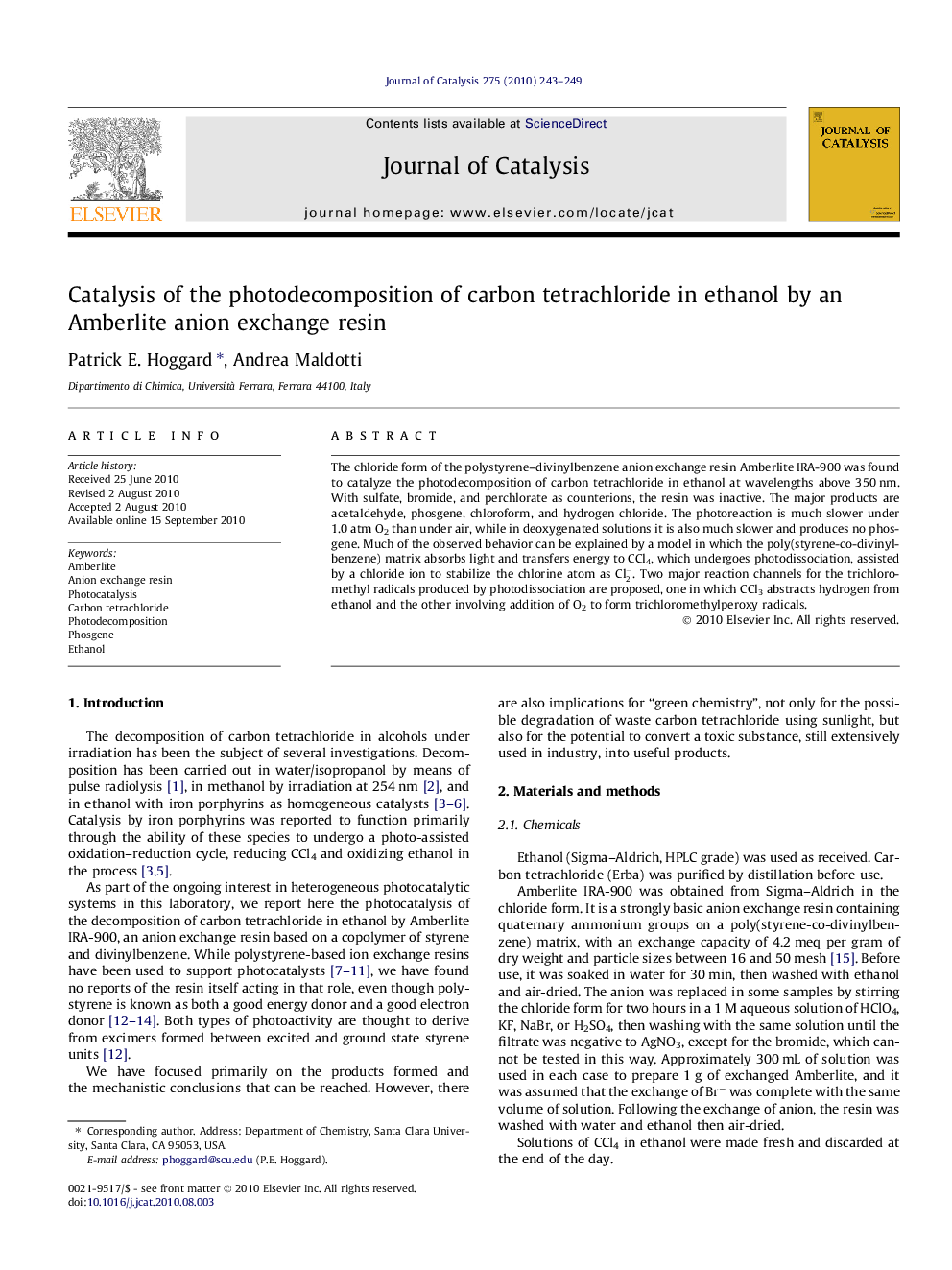| کد مقاله | کد نشریه | سال انتشار | مقاله انگلیسی | نسخه تمام متن |
|---|---|---|---|---|
| 61804 | 47606 | 2010 | 7 صفحه PDF | دانلود رایگان |

The chloride form of the polystyrene–divinylbenzene anion exchange resin Amberlite IRA-900 was found to catalyze the photodecomposition of carbon tetrachloride in ethanol at wavelengths above 350 nm. With sulfate, bromide, and perchlorate as counterions, the resin was inactive. The major products are acetaldehyde, phosgene, chloroform, and hydrogen chloride. The photoreaction is much slower under 1.0 atm O2 than under air, while in deoxygenated solutions it is also much slower and produces no phosgene. Much of the observed behavior can be explained by a model in which the poly(styrene-co-divinylbenzene) matrix absorbs light and transfers energy to CCl4, which undergoes photodissociation, assisted by a chloride ion to stabilize the chlorine atom as Cl2-. Two major reaction channels for the trichloromethyl radicals produced by photodissociation are proposed, one in which CCl3 abstracts hydrogen from ethanol and the other involving addition of O2 to form trichloromethylperoxy radicals.
Under irradiation (λ > 350 nm), a mixture of CCl4 and ethanol decomposes in the presence of the Cl− form of Amberlite IRA-900 to yield phosgene, acetaldehyde, chloroform, and hydrogen chloride. Chloride appears to hinder recombination of Cl and CCl3 radicals through the formation of Cl2- ion radicals.Figure optionsDownload high-quality image (42 K)Download as PowerPoint slide
Journal: Journal of Catalysis - Volume 275, Issue 2, 22 October 2010, Pages 243–249